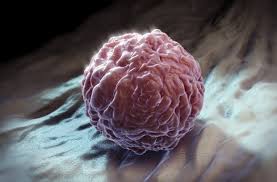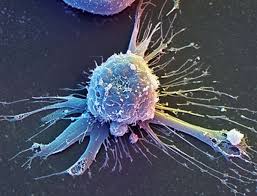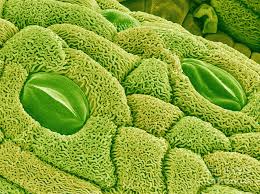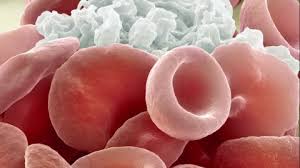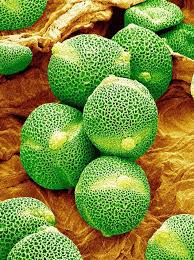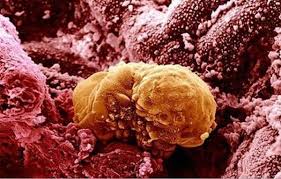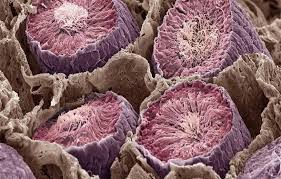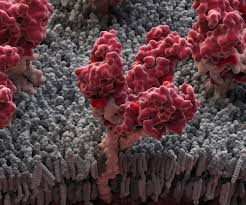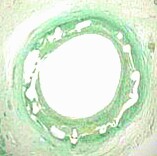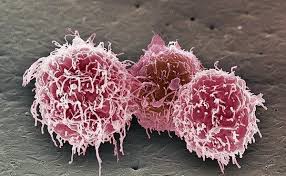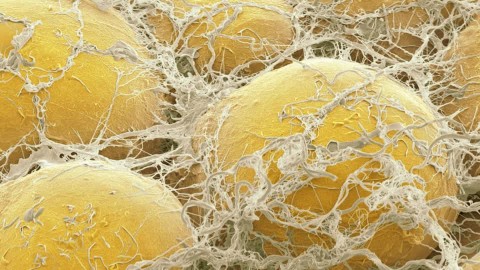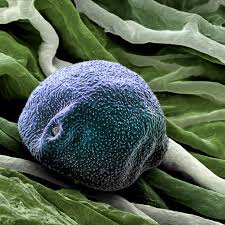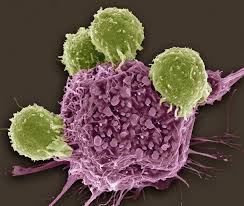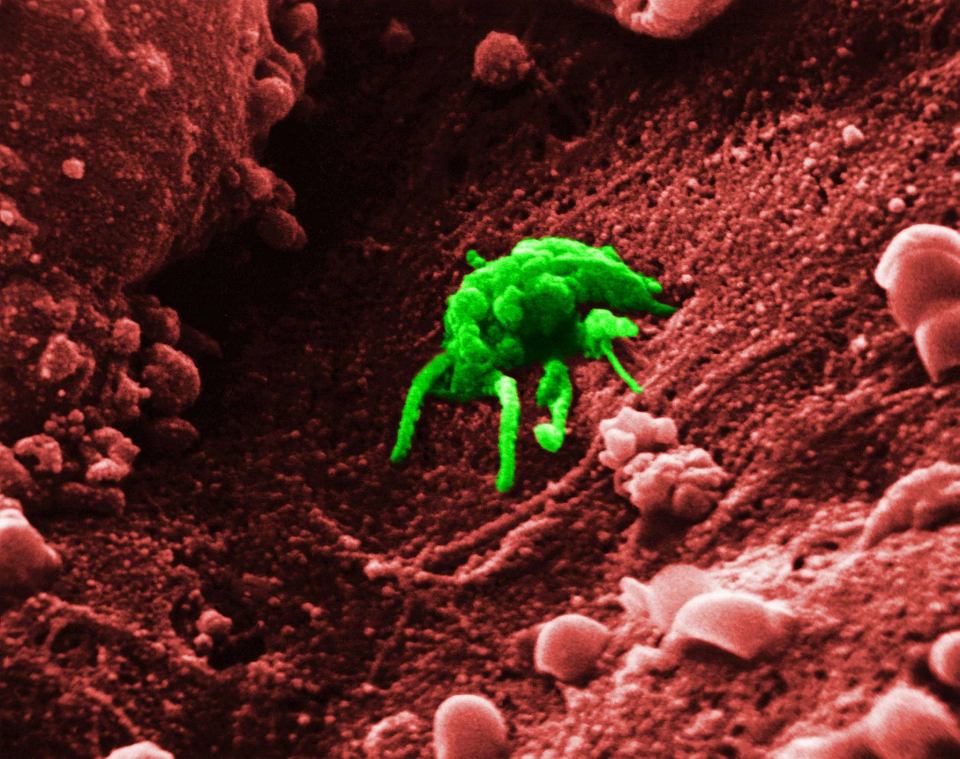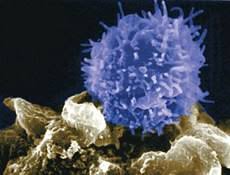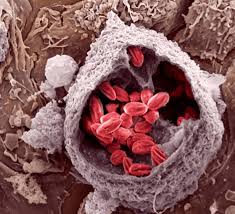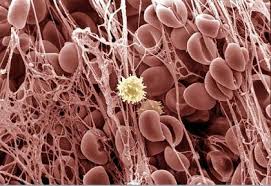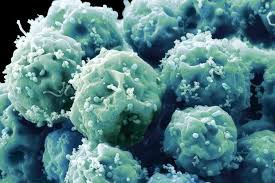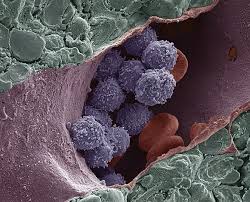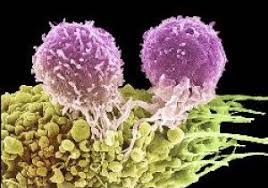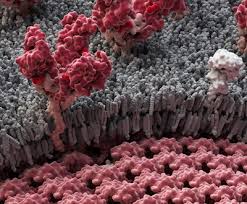



FITONCIDAS, PHYTONCIDES, FITONCIDA o PHYTONCIDE: "The great secret of the Forest"
Shinrin Yoku (Forest Bathing)
Samurai Spain 侍 president of the 𝐈𝐅𝐌© 𝐈𝐍𝐓𝐄𝐑𝐍𝐀𝐓𝐈𝐎𝐍𝐀𝐋 𝐅𝐎𝐑𝐄𝐒𝐓 𝐌𝐄𝐃𝐈𝐂𝐈𝐍𝐄 ⚕
The studies of the master Samurai Spain, president of IFM © International Forest Medicine, a pioneer in Europe and theworld’s leading expert in the world of phytoncide study applied to Shinrin Yoku 森林 浴, in the forests.Based on the studies of Boris Petrovich Tokin (Токин, Борис Петрович). Discoverer of phytoncides.
From his experience in the forest where he has lived for over 13 years, the master Samurai Spain, carries out scientic studies on phytoncides, phytoncides, phytoncides or phytoncides. Based on his thesis since 1986, based on the discoveries of BORISPETROVICH TOKIN, discoverer of phytoncides.
Name, chronology and origin of phytoncides
History of phytoncides
"This term has existed in Research for 81years, coined in 1928 by Dr. Boris P. Tokin"
"The true story about Boris Petrovich Tokin and phytoncides"
Boris P. Tokin was drawn to the fact that in forests, wild plants were less sick than cultivated plants.
He planned his first hypothesis by asking himself the following question: Will plants produce chemicals that protect
them from harmful insects and bacteria?
Boris P. Tokin and his colleagues investigated the effect of some 150 species of plants and their effects on
bacteria.
It was then that they could establish important foundations.
For example, that the mush made with minced onion garlic in a few minutes eliminated in a fulminant way columns of
streptococci, which cause many diseases, such as tonsillitis, Escherichia coli, typhoid bacilli and even tuberculosis
bacilli.
The volatile substances released from freshly minced onion or garlic porridge killed many breeds of mushrooms
in 2-3 minutes, and animal eggs, including shellfish eggs, the shell of which does not allow the passage of most of the
chemical products.
The first reports on experimental data, including the observed phenomenon of the death of microorganisms and
some macro organisms, including mollusk eggs located a short distance from injured plants, were made on May 30, 1930 at
the Congress of Zoologists of all the Union in Kiev, and then in September of the same year, at the II International
Congress of Cytology in Amsterdam (Holland). They published the texts of the reports in German in 1930 and in Russian in
1931.
Thus, during the experiments carried out in 1929-30. As part of the study of Gurvich’s ideas on mitogenetic
radiation, they recorded the death of yeast cells. According to he carried out the memoirs of BP Tokin, while
studying at the university in 1928. Therefore, in some sources, the date of the discovery of the phenomenon of
phytoncides It is 1928, in others, 1929, and in the third - 1930.
Therefore, there were objective reasons because they accidentally discovered it between 1929-1930. This phenomenon
received its scientific justification and its name only in 1942. However, although in the period from 1935 to 1939.
BP Tokin did not deliberately address the problem of phytoncides. By 1940, it had formed the main provisions of his
theory.
The first publication on the subject of bactericides of plant origin (phytoncides) appeared in print in 1942. This
year is the official date of birth of the term "phytoncides".
“It would be more correct to say that in the course of a series of experiments carried out in 1928-1930. We
can conclude it that this was the case when the foundations were laid for the discovery that took place later.”
In 1964, Boris Petrovich expanded the definition of phytoncides by two indications: first, that phytoncides can be
not only volatile substances but also non-volatile plant substrates (eg “tissue juices”), and second, phytoncides
they can produce not only wounded but also healthy plants.
Source: [* We would like to express our appreciation for the archival materials provided by the
scientist and the advice to Boris Petrovich's granddaughter, Polina Aleksandrovna Ereskovskaya and her husband
Sergey Sergeevich Zhebrovsky, who not only preserved the scientist's archive, but also they systematized
it].
The first publication on the subject of bactericides of plant origin (phytoncides) appeared in print in 1942. This year is the official date of birth of the term "phytoncides".
“It would be more correct to say that in the course of a series of experiments carried out in 1928-1930. We can conclude it that this was the case when the foundations were laid for the discovery that took place later.”
In 1964, Boris Petrovich expanded the definition of phytoncides by two indications: first, that phytoncides can be not only volatile substances but also non-volatile plant substrates (eg “tissue juices”), and second, phytoncides they can produce not only wounded but also healthy plants.
Source: [* We would like to express our appreciation for the archival materials provided by the scientist and the advice to Boris Petrovich's granddaughter, Polina Aleksandrovna Ereskovskaya and her husband Sergey Sergeevich Zhebrovsky, who not only preserved the scientist's archive, but also they systematized it].
Boris Petrovich Tokin "An Eminence"
Author of more than 300 scientific papers, including several monographs and textbooks published in the USSR and abroad (GDR, FRG, France and Japan).
Under his direction, they defended 60 theses for candidate in biological sciences, and BP Tokin was also a scientific consultant for over 20 doctoral theses.
He did an enormous scientific, organizational and social work. He spearheaded the preparation and implementation of the 50th anniversary of the death of Charles Darwin (1932). Together with NK Koltsov, he edited the Biological Journal (1932-1937).
He was deputy editor-in-chief for the publication of KA Timiryazev’s first ten-volume works (1935). It commissioned BP Tokin to edit Volume VI “The Historical Method in Biology”.
He was president of the Society of Materialist Biologists (1931-1934).
He headed the Leningrad Society of Nature Experts (1966-1984).
He took part in conflicts with geneticists.
He took part in the work of international congresses, made scientific reports in England, the United States, Sweden, Norway, Japan, Czechoslovakia.
“You young scientists are masters of all the past of science, and its victorious path depends on you.”
With each passing day, there is less and less time for life and creativity. Science, however, is immortal: it is in
the continuity of the facts and the struggle of ideas that make up its content, in the advances and in the
delusions.
Boris Petrovich Tokin
Author of more than 300 scientific papers, including several monographs and textbooks published in the USSR and abroad (GDR, FRG, France and Japan).
Under his direction, they defended 60 theses for candidate in biological sciences, and BP Tokin was also a scientific consultant for over 20 doctoral theses.
He did an enormous scientific, organizational and social work. He spearheaded the preparation and implementation of the 50th anniversary of the death of Charles Darwin (1932). Together with NK Koltsov, he edited the Biological Journal (1932-1937).
He was deputy editor-in-chief for the publication of KA Timiryazev’s first ten-volume works (1935). It commissioned BP Tokin to edit Volume VI “The Historical Method in Biology”.
He was president of the Society of Materialist Biologists (1931-1934).
He headed the Leningrad Society of Nature Experts (1966-1984).
He took part in conflicts with geneticists.
He took part in the work of international congresses, made scientific reports in England, the United States, Sweden, Norway, Japan, Czechoslovakia.
“You young scientists are masters of all the past of science, and its victorious path depends on you.”
With each passing day, there is less and less time for life and creativity. Science, however, is immortal: it is in the continuity of the facts and the struggle of ideas that make up its content, in the advances and in the delusions.
Boris Petrovich Tokin

Boris Petrovich Tokin
Samurai Spain
Fitoncidas
Phytoncides
Fitoncida
Phytoncide
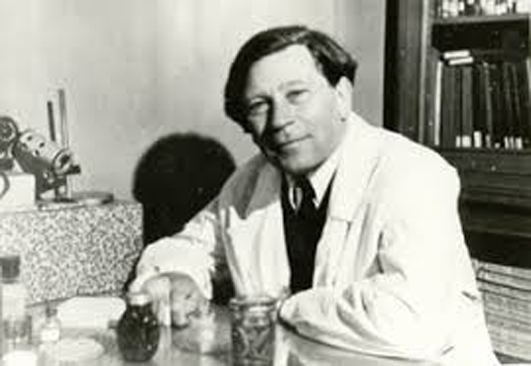
Boris Petrovich Tokin "discovery and father of the Fitoncidas-Phytoncides-Fitoncida-Phytoncide"
Boris Tokin (b. Boris Tokyn; B July 21, 1900, Kricev - D September 16, 1984) - in Russia. In the village of
Grushevka, Atkarskiy district, Saratov province biologist, professor at Tomsk University and professor at Leningrad
State University, Doctor of Biological Sciences, founder of the embryology department (1949) LSU, hero of Socialist
Labor ( 1971), Honorary Scientist of the RSFSR, winner of the Stalin Prize (1950), president of the Leningrad
Society of Naturalists from 1966 to 1984. "Discoverer and creator of the theory of phytoncides".
In 1930 he graduated from Moscow State University. In the 1930s he was appointed Director of the State Institute of
Biology.In June 1936, Boris P. Tokin was appointed from Tomsk State University , in November 1937 he was removed from
this position, with the exception of the CPSU (b), arrested in February 1938. A year later he was released and
rehabilitated.
From March 1939 he worked in the Department of Anatomy, Histology and Embryology at Tomsk State. In 1941, he began the
creation of the Tomsk Committee of Scientists, which brought together university staff for scientific research to
support the army.
From 1945 to 1955 he was a member of the Experimental Medicine (VIEM), professor and Head of the Department of
Embryology, LSU.In 1950, he became the winner of the Stalin Prize. He took part in conflicts with geneticists. In the
early 1950s Tokin to the CC VKP, who reported that the Jewish Masonic lodge secretary Professor VY Alexandrov in the
late 40s created in said Viem Zionist group, which includes the director of the DN Nasonov Institute, Professor PG
Svetlov, AA Brown, AD Brown and other scholars. 1966 to 1984 - President of the Leningrad Society of Naturalists. ...
died in 1984.
Boris Petrovich Tokin noted that dishes of “oriental cuisine”, cooked in bazaars in conditions, did not always meet the
sanitation requirements, did not cause outbreaks of intestinal infections. He found that the plant products used in
preparing these dishes, such as spices, protect them from harm and people from infectious diseases. In 1942 he published
“Medgiz” published booklet Tokin, where the author describes experiments on the antimicrobial activity of garlic and
onion in microorganism porridge. During the German-Soviet war, the shortage of medicines, Tokin recommended the use
porridge, the aqueous solutions of the tissue juices and water infusion of the external scales (20 g per 200 ml of
water) onion and garlic in the treatment of infected wounds and intestinal diseases. Tokin argued that under the
influence of volatiles kill not only bacteria, but also microscopic fungi and protozoa. This Tokin offering was widely
used in hospitals during the war years. Tokin argued that under the influence of volatiles kill not only bacteria, but
also microscopic fungi and protozoa. This Tokin offering was widely used in hospitals during the war years. Tokin argued
that under the influence of volatiles kill not only bacteria, but also microscopic fungi and protozoa.This Tokin
offering was widely used in hospitals during the war years.
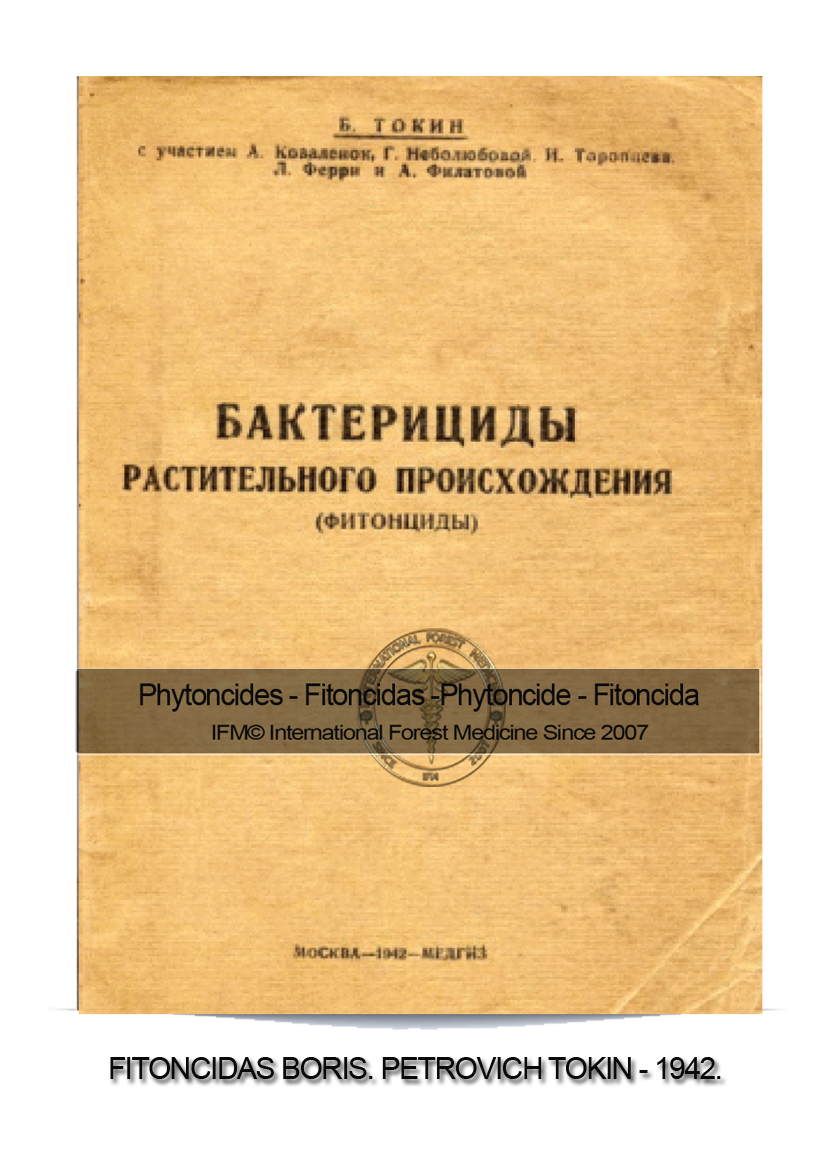
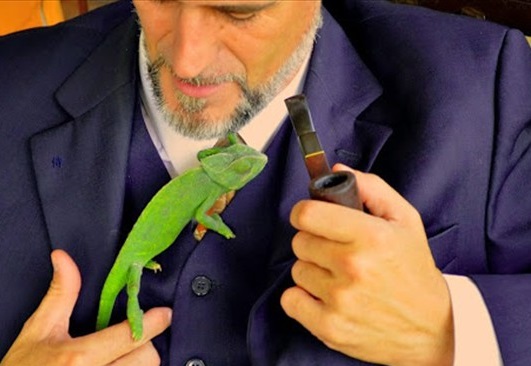
Samurai Spain his life in the forest since 2007 and field studies on Phytoncides.
His second passion was science and medicine, therefore, in 1980 he studied in medicine, graduating in 1986 in
the specialty of Anatomy and Pathology in Madrid. While he was studying medicine, he joined the Spanish Red Cross
where for over three years as an emergency specialist.
In 1985 he wrote his thesis on the works of Boris Petrovich Tokin , a Russian biochemist who discovered “phytoncides”,
and which served him for two fundamental things in his life.The first an excellent academic note, and the second and
more important, that of the discovery of substances that later would serve as the basis for what today becomes one of
the major activities of his life in the forest. The real and field research of the influence of these substances and how
they can influence human health. Making it a critical reference at a global level on international theories and studies
on phytoncides in forest environments. There are many institutions that collate your information internationally as
experts in this matter.
In 1987 it came to his knowledge that in Japan, there was a group of researchers, doctors and scientific colleagues, who
were working on the field of phytoncides and forests, besides the studies and publication of the book published in 1978
by Boris P. Tokin in that country.
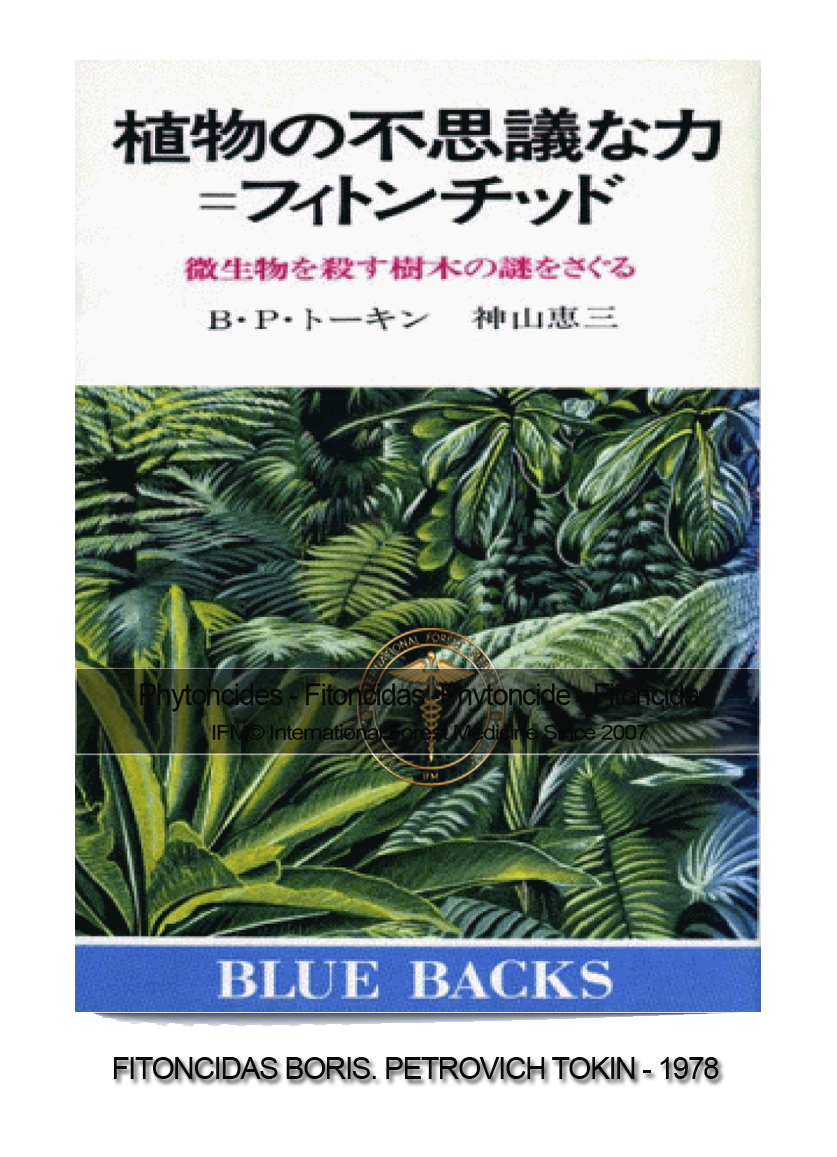 It was then that he followed his evolutions in this field. Thus he remained united since then, until in 2007, he decided
went his urban life in Madrid where he held the position of General Director, Managing Director and President in several
companies. He has lived since 2007, in a forest in the Serranía de Ronda in Andalusia since then. It is from there that
he continues to check the evolution and development of his field studies daily in what he says is the “great secret of
the forest: Phytoncides”.
It was then that he followed his evolutions in this field. Thus he remained united since then, until in 2007, he decided
went his urban life in Madrid where he held the position of General Director, Managing Director and President in several
companies. He has lived since 2007, in a forest in the Serranía de Ronda in Andalusia since then. It is from there that
he continues to check the evolution and development of his field studies daily in what he says is the “great secret of
the forest: Phytoncides”.
He immersed himself in nature-based simplicity, where it tries closely related to wabi-sabi (侘 寂), and his Samurai
philosophy of life. Founded Shinrin Yoku European Association in 2007, with worldwide recognition for its prestigious
quality. He defends Forest Medicine as a natural and traditional preventive therapy, and try appointed president of IFM
© International Forest Medicine, which has a research department with nationally and internationally recognized
collaborators.
Master Samurai Spain assures: “THE GREAT SECRET OF THE FOREST ARE THE FITONCIDAS”.
An Advice Can Give It, Who Has gained The Experience Of Having Lived It. Samurai Spain”
An Advice Can Give It, Who Has gained The Experience Of Having Lived It. Samurai Spain”
Fitoncidas-Phytoncides-Fitoncida-Phytoncide
Phytoncides-Phytoncide
IFM International Forest Medicine- Participants of the 7th All-Union Meeting on Phytoncides (Kiev, June 1973). Seated in
the first row (from left to right): GATagiev (Baku), AM Grodzinsky (Kiev), VP Tulchinskaya (Odessa), BE Aizenman (Kiev),
BP Tokin (Leningrad), DG Zatula (Kiev), SI Zelepukha (Kiev)
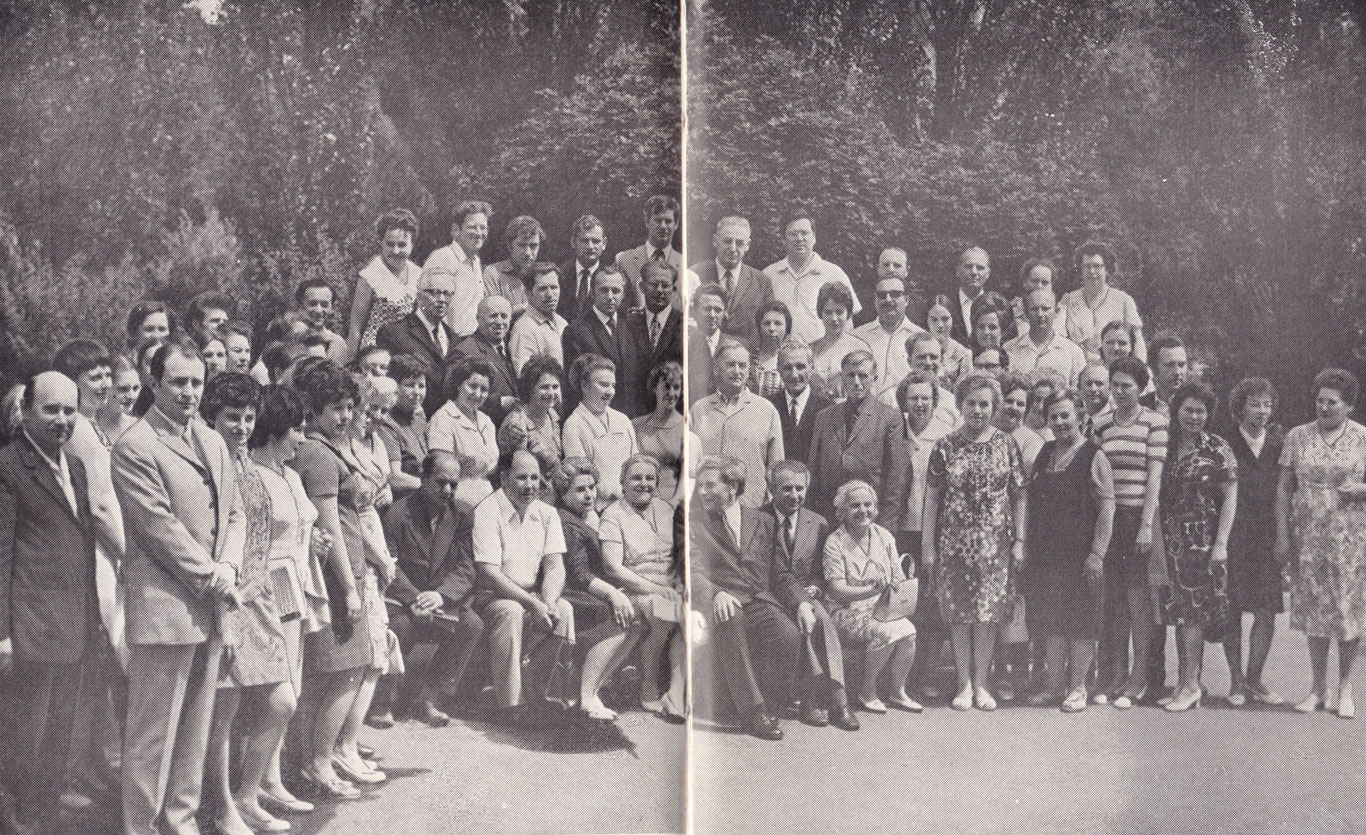
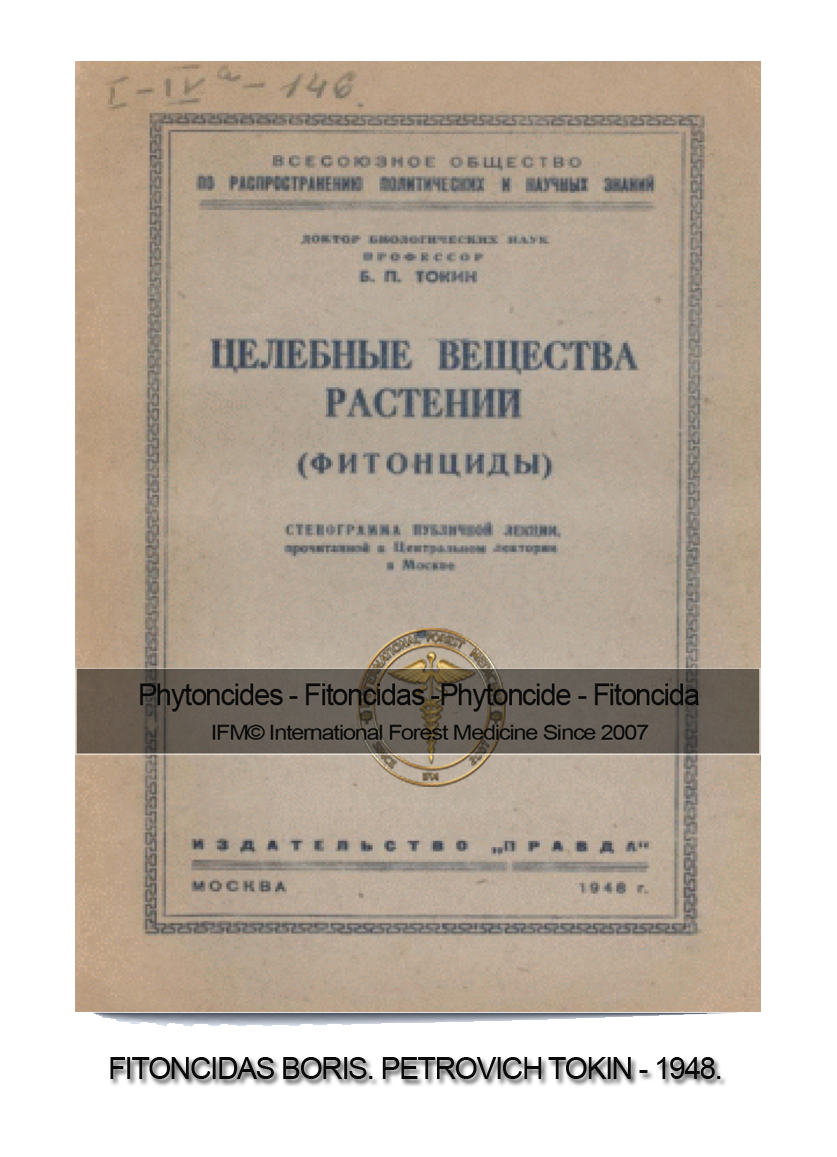
The study of phytoncides has become a biological doctrine, developed by the joint effort of scientists, biochemists, botanists, zoologists, chemists, microbiologists, and physicians and researchers from around the world.
And since 2007: “A study priority in Shinrin Yoku (forest baths), and its application by the 𝐈𝐅𝐌 © 𝐈𝐍𝐓𝐄𝐑𝐍𝐀𝐓𝐈𝐎𝐍𝐀𝐋 𝐅𝐎𝐑𝐄𝐒𝐓 𝐌𝐄𝐃𝐈𝐂𝐈𝐍𝐄 ⚕, as principal researcher the master Samurai Spain”.
Phytoncides were called bactericidal, fungicidal and protistocidal substances produced by plants
They became one of the factors of their immunity and play a role in the relationships of the organisms in the biocenoses.
The antibiotic substances of lower bacteria and fungi, which play a role in the "antagonism of microbes", are special
cases of the phytoncide phenomenon in the plant kingdom.
From a biological point of view; "Antibiotics" are obtained from omids and, due to their chemical nature, may coincide
with native phytoncides or, more often, be any component of a phytoncide complex. The production of "antibiotics" by
lower plants must also be considered in relation to their immunological properties, and a biologist is obliged to talk
about the immunity not only of macro-organisms, but also of bacterial and fungal cells .
The first reports that wounded higher plants kill certain micro and macro-organisms are at a distance from them, try
made by the experimental biology officer of the Moscow Zoo (chief professor MM Zavadovsky) in 1928-1929, then at the
Congress of All-Union zoologists in Kiev in May 1930 and at the 2nd International Congress of Cytology in Amsterdam in
August 1930.
Over the past decades, a team of Ukrainian researchers led by Academician VGDrobotko, a team of Phytoncides from
Chisinau led by Prof. DD Verderevsky, scientists from Siberia, Leningrad and many other cities.
The IV meeting on the problem of phytoncides in Kiev, convened by the Academy of Sciences of the Ukrainian
Soviet Socialist Republic in 1965, About 200 scientists from different specialties from 40 cities in our country attended
the IV meeting on the problem of phytoncides in Kiev, convened by the Academy of Sciences of the Ukrainian Soviet
Socialist Republic in 1965.
NG Kholodny’s laboratory in Ukraine worked in the same direction until the1940s. In many other countries it carried
interesting research out in phytoncides: in the laboratory of the American plant pathologist Ark (California),
Martinec (Czechoslovakia), in the laboratory of Winter (Germany) and in other countries. .
Shortly after the discovery of the phytomid phenomenon in the plant world, the phytomid problem developed in Russia as
an ecological-evolutionary problem of the relationship of organisms. From the science film “Phytoncides”, which try
shown to the symposium participants, it was biological problems, and not just questions of a utilitarian medical nature,
that had most concerned researchers in phytoncides from the beginning of their discovery. It was the biological
doctrine of phytoncides that tries favorably appreciated by biologists AA Zavarzin, LA Orbeli, BL Isachenko, BM
Kozo-Polyansky, and others.
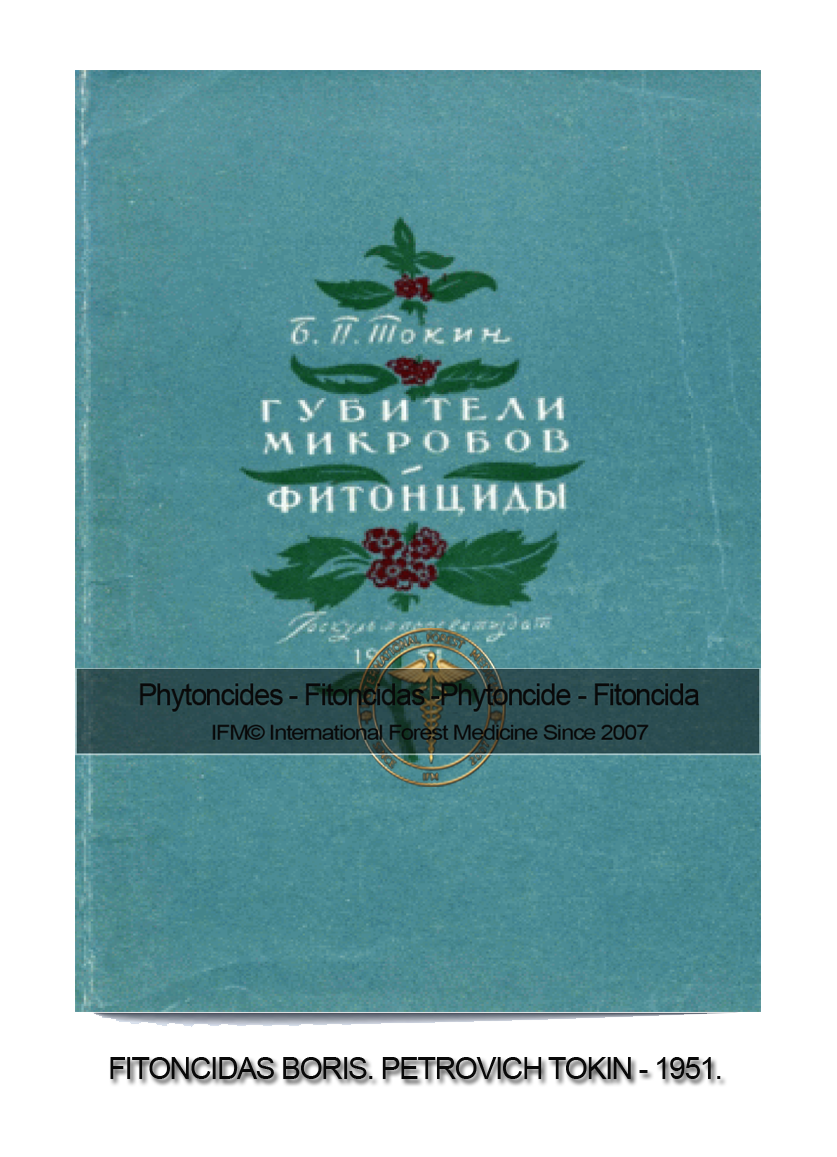
The phytoncide phenomenon is not characteristic of any group of plants, but of the entire plant world, from
bacteria to flowering plants. Any plant has phytoncidal properties.
The apparent exceptions are for the inaccuracy of the experiments. Of course, it is unnecessary for the “secretions”
of all plants to kill Staphylococcus aureus or any other test object. It tries often not taken into account that
phytoncidal activity try closely related to the life and development of a plant, then in different seasons and
stages of vegetation, in different physiological conditions (diseased or healthy plant), in different soil
conditions and climatic, in different climatic conditions, day and night. The production of phytoncides by plants is
different (VG Gramenitskaya, SSSkvortsov, BP Tokin, FV Khetagurova)
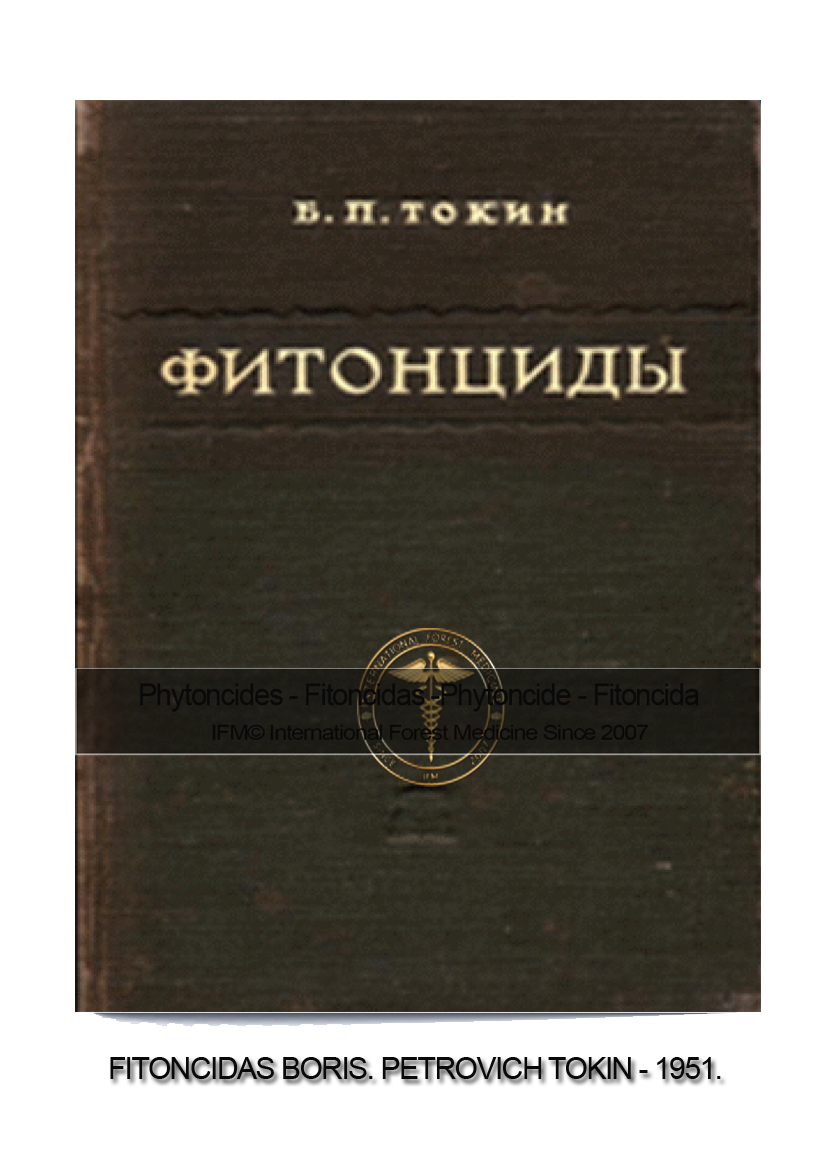
Shortly after the discovery of the phytomid phenomenon in the plant world, the phytomid problem developed in Russia as an ecological-evolutionary problem of the relationship of organisms. From the science film “Phytoncides”, which try shown to the symposium participants, it was biological problems, and not just questions of a utilitarian medical nature, that had most concerned researchers in phytoncides from the beginning of their discovery. It was the biological doctrine of phytoncides that tries favorably appreciated by biologists AA Zavarzin, LA Orbeli, BL Isachenko, BM Kozo-Polyansky, and others.
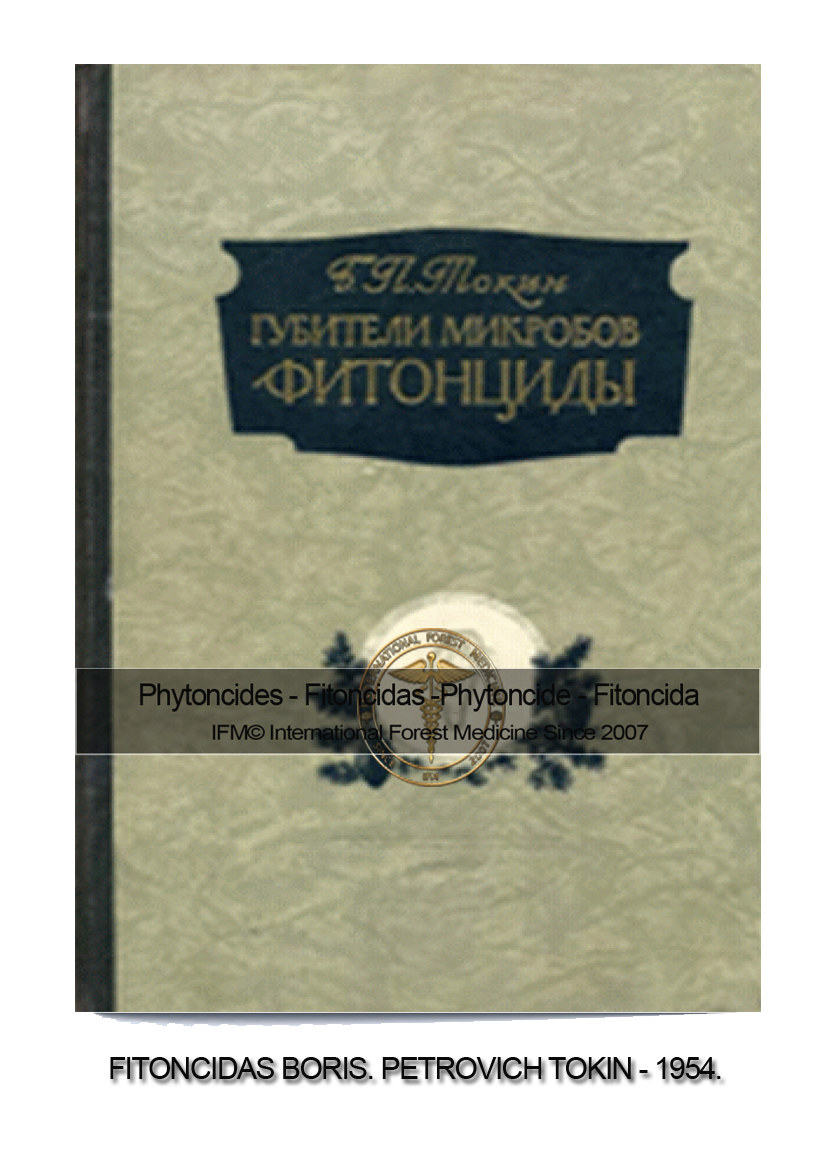
Over three-quarters of a century have passed since the discovery of phytoncides and phytoncides. The skeptical voices that criticized this contribution of recent evidence in nature and the creation of alternative theories, today try recognized in recent research applied to Shinrin Yoku (forest baths).
Thanks to the contributions of field research from the hand of the master Samurai Spain, who from his headquarters in the forest for the last 13 years, has transferred globally, to the different teams of scientists who have worked for over seven decades in this investigation Camp. “Contributing his critical voice in many studies. Denying theories of people outside the investigation who only seek a specific role and media self-promotion with no kind of knowledge.”
At present, we can confirm the discovery of the phenomenon of phytoncides and phytoncides, which turned out to be useful
for science and application in human health and life. Future advances in science will provide the light it needs for its
application in the world of medicine and its clinical application.
The phytoncides of the lower plants in modern medicine try called antibiotics and the “antibiotic
substances” of the higher plants try called phytoncides.
Phytoncides and their relationship with plant immunity
Phytoncides create immune properties in plants, and it doesn't just mean they are protective.
In all animal and plant organisms, it is impossible to find the same structures and functions that have only one meaning.
The phagocytic properties of cells in animal organisms have only immunological properties.
They have different meanings at different stages of development of organisms and under different physiological
conditions. Phagocytic reactions play an important role in the metamorphosis of animals, for example, during
regeneration.
In species evolution, phagocytic reactions started as reactions important for the defense system to act against
pathogenic microbes. They developed in the animal species as a function of intracellular digestion, in the same way it
happens with plants.
In biochemistry it acts with the appearance and change of its phytoncide properties during the development and growth of
plants, and it focuses its mission on protection.
In some plants, phytoncides may play a role, say, in regulating heat, while in others they may play a role in some
aspects of metabolism. * If we take into account that the biochemical evolution of plants did not proceed according to
the same “plan” and that there may be very different combinations of chemical phytosanitary devices with other
functions, it is natural to expect a great variety of phytoncidal properties in different plants. (B. P.
Tokin, ON THE ROLE OF PHYTONCIDES IN NATURE)
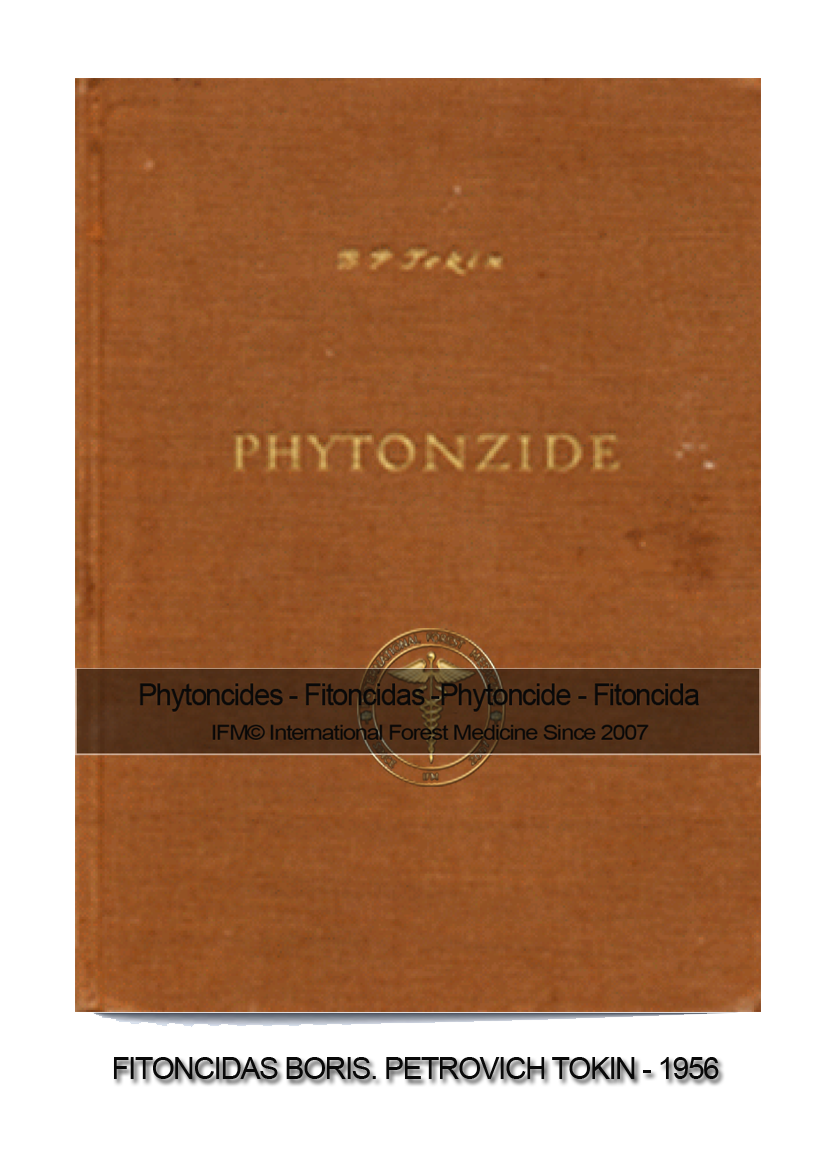 Phytoncides from higher plants can play a protective role, acting not only at the bactericidal level but also
bacteriostatically, inhibiting the reproduction of bacteria and fungi, causing the Negative chemotaxis omnium in
unicellular organisms (BP Tokin) and bacteria (L. A. Blinova).
Phytoncides from higher plants can play a protective role, acting not only at the bactericidal level but also
bacteriostatically, inhibiting the reproduction of bacteria and fungi, causing the Negative chemotaxis omnium in
unicellular organisms (BP Tokin) and bacteria (L. A. Blinova).
Phytoncides released into the external environment, in particular by the underground parts of other plants in the soil,
can create chemical conditions that prevent organisms from assimilating nutrients, changing their reproduction rates,
etc. Phytoncides can stimulate the reproduction of microorganisms that are antagonists of pathogenic microorganisms for
a plant.
Attempts to use phytoncides in preventive medicine, sanitary hygiene, balneology and urban greening try quite justified.
One hectare of coniferous forest emits approximately 4 kg of volatile organic substances into the atmosphere per day,
and one hectare of deciduous forest, approximately 2 kg (MN Artemyeva). Phytoncides play the role of one of the many
factors that “regulate” the composition of the microflora of the air.
In a hygienic evaluation of various types of forests, plantations and ornamental plants, the various effects of
phytoncides on the body (on enzyme systems, on the activity of the heart and other organs) must try taken into
account. Lit .: Rogacheva AI Phytoncides and its use in the canning industry, M., 1956, bibliogr.; Tokin BP Fitontsidy,
M., 1951, bibliogr;he, Microbe Destroyers - Phytoncides, M., 1960, bibliogr .; Phytoncides in Medicine, ed. VGDrobotko,
Kiev, 1959; Phytoncides in medicine, agriculture and food industry, ed. VG Drobotko, Kiev, 1960;Phytoncides, his role in
nature, ed. BP Tokin, L. , 1957, bibliogr .; Gümmeg G. Die gegenseitige Beeinflussunghöherer Pflanzen, Allelopathie,
Jena, 1955, Bibliogr.
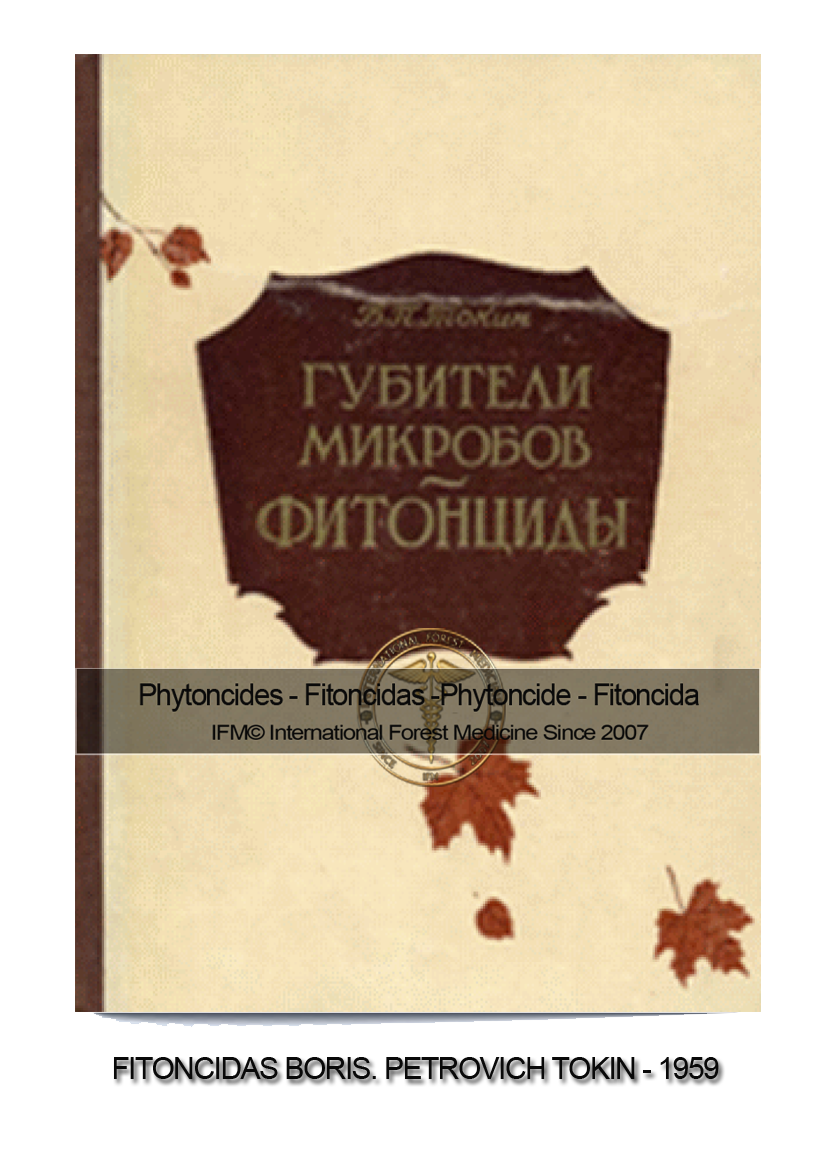
In all animal and plant organisms, it is impossible to find the same structures and functions that have only one meaning.
The phagocytic properties of cells in animal organisms have only immunological properties.
They have different meanings at different stages of development of organisms and under different physiological
conditions. Phagocytic reactions play an important role in the metamorphosis of animals, for example, during
regeneration.
In species evolution, phagocytic reactions started as reactions important for the defense system to act against
pathogenic microbes. They developed in the animal species as a function of intracellular digestion, in the same way it
happens with plants.
In biochemistry it acts with the appearance and change of its phytoncide properties during the development and growth of
plants, and it focuses its mission on protection.
In some plants, phytoncides may play a role, say, in regulating heat, while in others they may play a role in some
aspects of metabolism. * If we take into account that the biochemical evolution of plants did not proceed according to
the same “plan” and that there may be very different combinations of chemical phytosanitary devices with other
functions, it is natural to expect a great variety of phytoncidal properties in different plants. (B. P.
Tokin, ON THE ROLE OF PHYTONCIDES IN NATURE)
 Phytoncides from higher plants can play a protective role, acting not only at the bactericidal level but also
bacteriostatically, inhibiting the reproduction of bacteria and fungi, causing the Negative chemotaxis omnium in
unicellular organisms (BP Tokin) and bacteria (L. A. Blinova).
Phytoncides from higher plants can play a protective role, acting not only at the bactericidal level but also
bacteriostatically, inhibiting the reproduction of bacteria and fungi, causing the Negative chemotaxis omnium in
unicellular organisms (BP Tokin) and bacteria (L. A. Blinova).
Phytoncides released into the external environment, in particular by the underground parts of other plants in the soil,
can create chemical conditions that prevent organisms from assimilating nutrients, changing their reproduction rates,
etc. Phytoncides can stimulate the reproduction of microorganisms that are antagonists of pathogenic microorganisms for
a plant.
Attempts to use phytoncides in preventive medicine, sanitary hygiene, balneology and urban greening try quite justified.
One hectare of coniferous forest emits approximately 4 kg of volatile organic substances into the atmosphere per day,
and one hectare of deciduous forest, approximately 2 kg (MN Artemyeva). Phytoncides play the role of one of the many
factors that “regulate” the composition of the microflora of the air.
In a hygienic evaluation of various types of forests, plantations and ornamental plants, the various effects of
phytoncides on the body (on enzyme systems, on the activity of the heart and other organs) must try taken into
account. Lit .: Rogacheva AI Phytoncides and its use in the canning industry, M., 1956, bibliogr.; Tokin BP Fitontsidy,
M., 1951, bibliogr;he, Microbe Destroyers - Phytoncides, M., 1960, bibliogr .; Phytoncides in Medicine, ed. VGDrobotko,
Kiev, 1959; Phytoncides in medicine, agriculture and food industry, ed. VG Drobotko, Kiev, 1960;Phytoncides, his role in
nature, ed. BP Tokin, L. , 1957, bibliogr .; Gümmeg G. Die gegenseitige Beeinflussunghöherer Pflanzen, Allelopathie,
Jena, 1955, Bibliogr.

"Phytoncides-Phytoncide: The best inheritance to continue studies for the next generations"
Los fitoncidios, fitoncidas, phytoncide o PHYTONCIDES by IFM © INTERNATIONAL FOREST MEDICINE
According to scientific studies by International Forest Medicine ©, all plants together annually release about 490 million tons of volatile substances into the atmosphere. With the air we inhale them, we assimilate the body; we disinfect the lungs. The culprits are phytoncides, phytoncides, phytoncide or PHYTONCIDES, their impact is very strong. If they put the cut leaves of the bird cherry under a glass lid and put a fly or a mouse, after a while the animals will die. The phytoncids of the bird cherry kill even rats. The inhabitants of many countries of the world know well that sleeping under a walnut tree is not worth it: the dream will be bad, and the next day their head will hurt. The phytoncides in walnut leaves repel flies, mosquitoes and other insects.
The volatile phytoncides, phytoncides, phytoncide or PHYTONCIDES of the green belt present a powerful barrier against pathogenic microbes. They can the ability to kill bacteria from a distance. In addition, there are non-volatile bactericidal substances in plants, their second line of defense. Pine needles from pine, fir, juniper, poplar, oak, birch, and many other plants have bactericidal properties. Our indoor plants, such as geraniums and begonias, reduce the microorganisms in the ambient air by 43%, tsiperus - 59%, chrysanthemum - by 66%. It affects the fact that there are far fewer flies.
IFM © International Forest Medicine: Almost half of the medicines available in modern scientific medicine in all countries are substances from higher plants. About 2 percent fall into drugs derived from fungi and bacteria (antibiotics), Over 80 percent of the drugs used for heart disease are of plant origin.
* Geranium phytoncities calm the central nervous system, improve sleep function, especially for severe sleep disorders.
* Promote a space for scientific debate, where experiences related to the themes of each symposium are try exchanged.
* Pine belongs to one of the most popular phytoncid plants. When sampling from the soil surface and from a certain depth
or from the air in various forests - oak and birch forests, pine forests - there are various types of microorganisms
everywhere, but many are different. The hectare of deciduous forest in the summer releases 2 kilograms of phytoncides,
phytoncides, phytoncide or volatile PHYTONCIDES, conifers - 5 and juniper - 30 kilograms. This amount is enough to kill
all the microbes in a medium-sized city. Hence such different amounts. In the air of a pine forest, they are 10 times
less than in a birch forest. Although the birch conscientiously fulfills the duties of an environmental order: it
ruthlessly liquidates the microorganisms that carry the wind into the birch forest.
* In plantations where warty birch grows, there are only about 450 microbes in a cubic meter of air. And in operating
rooms, where everything, including air, must be sterile, the content in the cubic meter of air of 500 non-permeable
microorganisms is try allowed according to existing regulations. Not without reason, it builds many sanitariums and
hospitals in forests. The phytoncides, phytoncides, phytoncides or PHYTONCIDES of these trees recovered the body’s
defenses - the forest air tones it.
* Virtually all species that are part of the forest have antimicrobial properties. Conifers ruthlessly deal with harmful
microflora. They excrete phytoncides, phytoncides, phytoncide or PHYTONCIDES approximately six times more than other
conifers, and fifteen times more than deciduous leaves. Conifers are very sensitive to air pollution from industrial
waste: in many cities it has practically disappeared. And junipers grow slowly, in most species there is no renewal of
seeds because of various disorders.
* Old trees are a powerful barrier to the path of various bacteria. Maple, as shown by biochemical studies, not only has
a high phytoncidal activity, but can also absorb substances harmful to humans, for example benzene. All of this speaks
to the healing value of forests as ecosystems. The energy that a human being finds in the forest in spring, in a
flowering meadow, where the air is try filled with the aroma of the volatile emissions of plants, phytoncides,
phytoncides, phytoncide or PHYTONCIDES.
* Scientific studies conclude that volatile substances (phytoncides, phytoncides, phytoncide or PHYTONCIDES), which
penetrate through the lungs and skin in the human body, kill and inhibit the development of pathogenic microbes, protect
it from infectious diseases and embalming tissues. Phytoncides normalize the heart rate and blood pressure, actively
take part in metabolism and have a positive effect on the human brain. People who live in forest areas are much less
susceptible to upper respiratory diseases compared to urban residents. The enormous value of green areas and plantations
within cities is enormous. And not only because plants emit oxygen, because they also emit phytoncides, phytoncides,
phytoncide or PHYTONCIDES.
* A green barrier to improve the air. The leaves of plants with the action of sunlight on them of a certain length emit
electrons that ionize the surrounding air. Ionized air has a beneficial effect on human health.
"Phytoncides contain something useful for medicine".Samurai Spain
* Of great importance is ionization of oxygen in the air, which determines its biological activity. The greatest
cure is the air of the mountains. There are 20 thousand negative ions in a cubic centimeter of air. In industrial
cities, on crowded premises, its concentration varies between 100 and 500.
* In the current era of increasing mechanization of man, most of the time is try done at home, depriving himself of
the healing air of forests and fields, rich in substances Biologically active plant and negative light ions, which are
try maintained in the normal in vitro functioning of the body, cause a deficit in our organism of the essential balance
that humans need. Caring for the green areas of our cities and towns by planting trees and shrubs, lawns, flower beds,
gardens and parks around the houses and in the streets, the cultivation of potted plants, benefits health of the human
being.
Boris Petrovich Tokin (Токин, Борис Петрович, July 21, 1900 - Leningrad, September 16, 1984) known for coining the
term phytoncides and promoting and systematizing its use. President of the Society of Materialistic Biologists wrote
articles integrating the works of Charles Darwin with Marx and Engels.
September 5, 2007.IFM International Forest Medicine
"Human welfare is something that increasingly worries humanity."
Methods: Shinrin Yoku (Forest Baths) Plants actively absorb the resources they used to live, but
they do so on a microscopic scale over most of their surface, which makes it impossible for us to perceive with the
naked eye the way in that perform this function. Biochemistry, which is the science in charge of providing the data
for research in phytoncides, phytoncides, phytoncides or phytoncide. Scientific studies that show the beneficial
effects of the forest on our physiology and psychology are powerful arguments to restore our relationship with
nature and our health. Results: An example of the effect of the changes produced and a good example of it results
from an influential figure, since 9 out of 10 gave very significant positive results. Conclusions: Therefore, it is
now clear that through Shinrin-Yoku (Forest Baths), benefits are try undoubtedly directly achieved in health
protection and prevention against the development of diseases.
Scientific studies that show the beneficial effects of the forest on our physiology and psychology are powerful
arguments to restore our relationship with nature and our health.
Results: An example of the effect of the changes produced and a good example of it is the result from a
notable figure, since 9 out of 10 gave very significant positive results.
Conclusions:Therefore, it is now clear that through Shinrin-Yoku (Forest Baths), benefits are try
undoubtedly directly achieved in health protection and prevention against the development of diseases.
"Phytoncides: The therapeutic effects of Forests"
From his experience in the life of the Forest, Master Samurai Spain helps to solidify with his experience and
developed hundreds of field studies and investigations with the practice of Shinrin Yoku (Forest Bath). A series of
results with groups of people of all ages and ethnicities who performed Shinrin yoku in the forest where they live,
also contributing a mutual experiment called “FEEDING ON FOREST LIFE”.
Medicinal plants have characteristics that allow them to influence through their components not only by direct
contact, but also at a distance by Phyntoncides emanations, the respirable substances produced by trees and other plants. It
maximizes the therapeutic benefits on respiratory conditions, the volatile compounds emitted by the trees are the
main responsible for this beneficial effect on the immune system, chemical compounds of the plants that prevent the
development of pathogenic microorganisms. They are the natural antibiotics. It has carried experiments out with
various volatile compounds. natural aromatics, such as pinenes, lemons, cedrole, or isoprene; they know some of them for
their antimicrobial and tumor suppressing effect. These volatile compounds that plants produce as defense are try called
“phytoncides”.
Over 5000 volatile substances, defend plants from the surroundings against bacteria, fungi, and
insects.
Phytoncides act by preventing the growth of the attack organism. There is a strong relationship between
nature and health, direct contact with natural environments contributes to human health, and they go beyond
psychological benefits, because they also offer benefits for physical health.

STUDIES OF THE IMMUNE RESPONSE OF PHYTNOCIDES (IN VITRO)
Forest Medicine
Field
Studies
Phytoncides
In Vitro
Phytoncides with in vitro field studies and some IFM results © International Forest Medicine.
An in vitro study sought to determine whether the benefits of "forest bathing" on immune function were related to
phytoncides (essential oils of wood). The researchers concluded that they significantly enhanced one type of immune
cell activity: Phytoncides important to cytolytic activity of NK-92MI cells in a dose-dependent manner and
significantly expressed the acting expression, granzyme A and granulysin in NK-92MI cells.
Phytoncides also partially but significantly restore decreased human NK activity and decreased expression of
perforin, granzyme A, and granulysin in NK-92MI cells induced by dimethyl 2,2-dichlorovinyl phosphate (DDVP), an
organophosphate pesticide.
Phytoncide pretreatment partially prevents DDVP-induced inhibition of NK activity. Taken together, these data
indicate that phytoncides significantly potentiate human NK activity and this effect is at least partially mediated by
the induction of intracellular perforin, granzyme A, and granulysin.
Another study showed the antioxidant and microbe inhibitory effects of these compounds: The physiological activities
of four types of phytoncide solutions (types A, AB, CY and D), prepared from various plants widely distributed in
nature, were to try examined.
We looked at these phytoncide solutions, active oxygen inhibition tests, DPPH radical scavenging effects,
nitrogen monoxide inhibition, and lipid peroxide inhibition.
Types AB and D of the phytoncide solutions showed especially comparatively potent antioxidant effects.
Antibacterial and antifungal assays were performed using types AB and D, and the results showed significant inhibitory
activities with these solutions.
An in vitro study in human fibroblast cells demonstrated the protective effects against reactive oxygen species with
the use of phytoncides. In addition, another study demonstrated inhibitory effects of phytoncide solutions on human
and rodent melanoma cells.
PHYTONCIDES, PHYTONCIDE, FITONCIDAS OR FITONCIDIOS AND MEDICAL APPLICATIONS
One study even suggested the use of phytoncides as an alternative to medication in drug-eluting stents for cardiovascular patients.
This was because of the “antioxidant, antimicrobial, and anti-inflammatory” effects of mono terpenoids: A
drug-eluting stent (DES) is one of the treatment techniques commonly used in percutaneous coronary intervention
(PCI). Sirolimus (SRL) has been try widely used for DES as a drug to suppress neointimal hyperplasia and cause
restenosis.
Phytoncides (PTC) are compounds released from trees and plants, and their solutions contain mono terpenoids such
as un-pinene, careen, and myrceen. Some studies have reported that these components exhibit antioxidant, antimicrobial,
and anti-inflammatory activities.
Our hypothesis is that PTC can become an alternative drug to SRL for DES, showing eased side effects compared to
SRL. We compared a PTC embedded stent to an embedded SRL stent in terms of physicochemical, pharmacokinetic, and
biological properties.
In in vitro studies, they investigated the effects of each drug on cells. The results showed that both drugs
exhibited similar cytotoxic, anti-inflammatory, and anti-proliferative effects. However, these effects resulted from
different mechanisms associated with cells, as seen in the result of immunofluorescence.
An in vivo test showed that the lumen area was significantly larger and the neointimal area was significantly
smaller in SRL and PTC loaded stents compared to a drug unloaded stent. These results suggest that phytoncide may be a
workable alternative drug to SRL for advanced DES, it needs although more studies.
In the forest, human NK activity, NK cell number and intracellular anticancer proteins in lymphocytes were enhanced.
In the present study, we investigated how long the increase in NK activity lasts and compared the effect of a bathing trip in the forest on NK activity with a trip to places in a city without forests. Twelve healthy male subjects, 35-56 years of age, were selected with informed consent. Subjects experienced a three-day / two-night trip to forest fields and a city, in which activity levels during both trips were equalized.
On day 1, the subjects walked for two hours in the afternoon in a forest field; and on day 2, they walked for two hours in the morning and in the afternoon, respectively, in two different forest fields; and on day 3, blood and urine samples were taken on the second and third day during the trips, and on days 7 and 30 after the trip, and the NK activity, NK and T cell numbers, and granulisin, perforin and Lymphocytes expressing granzymes A / B in blood samples and adrenaline concentration in urine were measured.
Similar measurements were made before trips on a normal working day as the control.
Phytoncide concentrations in forest and city air were measured. The forest bathing trip significantly increased NK
activity and the number of cells expressing NK, perforin, granulysin and granzyme A | B and significantly decreased
the concentration of adrenaline in the urine. The increase in NK activity lasted over 7 days after the trip. In
contrast, a city tour did not increase NK activity, the number of NK cells, or the expression of certain
intracellular anticancer proteins, and it did not decrease the concentration of adrenaline in the
urine. Phytoncides, such as alpha-pinene and beta-pinene, were trydetected in forest air, but almost not in city
air. These findings show that a forest bathing trip increased NK activity, NK cell numbers, and levels of
intracellular anticancer proteins, and that this effect lasted at least 7 days after the trip. Phytoncides released
from trees and decreased stress hormone may contribute in part to increased NK activity.
Un estudio de seguimiento reprodujo la conclusión del estudio anterior unos años más tarde, esta vez midiendo
fitoncidas en el bosque, incluido un fitoncuro adicional, el isopreno. (Recuerde, las unidades de isopreno constituyen
constituyentes de aceites esenciales como monoterpenos, sesquiterpenos y fenilpropenoides). El resumen dice (énfasis
en negrita mío):Se hicieron mediciones similares antes del viaje en un día de fin de semana como el control. Se
midieron las concentraciones de fitoncida en el bosque.
A follow-up study reproduced the conclusion of the previous study a few years later, this time measuring phytoncides
in the forest, including an additional phytoncide, isoprene. (Remember, isoprene units are constituents of essential
oils such as monoterpenes, sesquiterpenes, and phenylpropenoids.) The abstract reads (bold emphasis mine): we made
Similar measurements before the trip on a weekend day as the control. Phytoncide concentrations in the forest were
measured. The day trip to the forest park significantly increased NK activity and the numbers of CD16 (+) and CD56 (+)
NK cells, perforin, granulysin, and NK cells expressing granzyme A / B and significantly decreased CD4 T cells ( +). the
concentrations of cortisol in the blood and adrenaline in the urine. The increase in NK activity lasted 7 days after
the trip. Phytoncides, such as isoprene, alpha-pinene, and beta-pinene, were to try detected in forest air. These
findings show that the day trip to the forest park also increased NK activity, NK cell number, and intracellular
anticancer protein levels, and that this effect lasted for at least 7 days after the trip. Phytoncides released from
trees and decreased levels of stress hormone may contribute in part to increased NK activity.
The forest environment enhances the activity of natural killer (NK) cells, the number of NK cells and the
intracellular anticancer proteins in lymphocytes, and that the increase in NK activity lasted over 7 days after trips to
forests in both male and female subjects. To explore the factors in the forest environment that activated human NK
cells, in the present study we investigated the effect of essential oils from trees on human immune function in twelve
healthy subjects, aged 37-60 years, who were try housed in a City hotel for 3 nights from 7:00 pm to 8:00 am Volatile
aromatic substances (phytoncides) were try produced by vaporizing Chamaecyparis obtusa (hinoki cypress) stem oil with a
humidifier in the hotel room overnight .
It took blood samples on the last day and they analyzed urine samples every day during the stay. NK activity, the
percentages of NK and T cells, and granulysin, perforin, lymphocytes expressing granzyme A / B in the blood, and the
concentrations of epinephrine and norepinephrine in the urine were try measured.
It made similar control measurements prior to stay on a normal workday. They measured the concentrations of
phytoncides in the hotel's air room. Exposure to phytoncide significantly increased NK activity and the percentages
of cells expressing NK, perforin, granulysin and granzyme A / B, and significantly decreased the percentage of T
cells and the concentrations of epinephrine and norepinephrine in the urine. Phytoncides, such as alpha-pinene and
beta-pinene, were to try detected in the hotel's air room. These findings show that exposure to phytoncides and
decreased levels of the stress hormone may contribute in part to increased NK activity. 13
PURPOSE: The purpose of this study was to identify the effects of phytoncides on the serum cortisol level, vital
signs, and life stress of college students. METHODS: This study was a non-synchronized design of the non-equivalent
control group. Subjects comprised 60 (control group: 28, experimental group: 32). The phytoncides mixed pine oil (pinus
sylvestris) with cypress oil (cupressus sempervirens) in the same proportion. In the experiment, I placed it in a scent
bottle and inhaled 3 times a day (9am, noon, before bed) for 2 weeks. The SPSS program version analyzed the data
12.0. RESULTS: In the experimental group, systolic BP (F = 15.603, p = .000), diastolic BP (F = 29.489, p = .000) and
serum cortisol level (F = 4.968, p = .000) decreased significantly. CONCLUSION: Inhalation of phytoncides is in part an
aid to reduce stress in the lives of college students. Phytoncides is the incense of the family tree. We recommend
examining the differences between green shower and phytoncide inhalation for stress reduction.
Other studies suggest that it may cause increased levels of allergies and autoimmune diseases, in part, by a lack of
contact with healthy bacteria and other substances found in nature.
An example of this are phytoncides, present in the essential oils of plants that protect them from putrefaction and
attack by certain insects.
"Phytoncides enter our body through the air and play a very important role in our immune system."

BORIS PETROVICH TOKIN - SAMURAI SPAIN
IFM© International Forest Medicine
Discoverer of the Phytoncides and pioneer in the studies applied by the master Samurai Spain, for over 13 years, in
field studies from the forest where he lives. As the great secret of the forest for the future health of humans with
its scientific studies based on phytoncides, in Shinrin Yoku 森林 浴 - Forest baths, as forest therapy.
“A teacher teaches a student so he can continue to transmit his knowledge to future generations. Thank you very much Boris Petrovich Tokin for your wonderful contribution and teachings”
Honor and Courage siempre Maestro.

Samurai Spain
Presidente de la IFM©.
05 September 2007, Samuari Spain president-IFM © International Forest Medicine
HD Microscope Images Phytoncides-Phytoncides-Phytoncide-Phytoncide
IFM© Interantional Forest Medicine since 2007
LAS FITONCIDAS
PHYTONCIDES
FITONCIDA
PHYTONCIDE
"The great secret of the forest: Phytoncides"
What are phytoncides or phytoncides? "The great secret of the Forest" Shinrin Yoku (Forest Baths)
 Credit:
IFM© INTERNATIONAL FOREST MEDICINE
/
IFM© INTERNATIONAL FOREST MEDICINE
Written by:
Samurai Spain President IFM© INTERNATIONAL FOREST MEDICINE
Published by:
IFM© INTERNATIONAL FOREST MEDICINE
Credit:
IFM© INTERNATIONAL FOREST MEDICINE
/
IFM© INTERNATIONAL FOREST MEDICINE
Written by:
Samurai Spain President IFM© INTERNATIONAL FOREST MEDICINE
Published by:
IFM© INTERNATIONAL FOREST MEDICINE
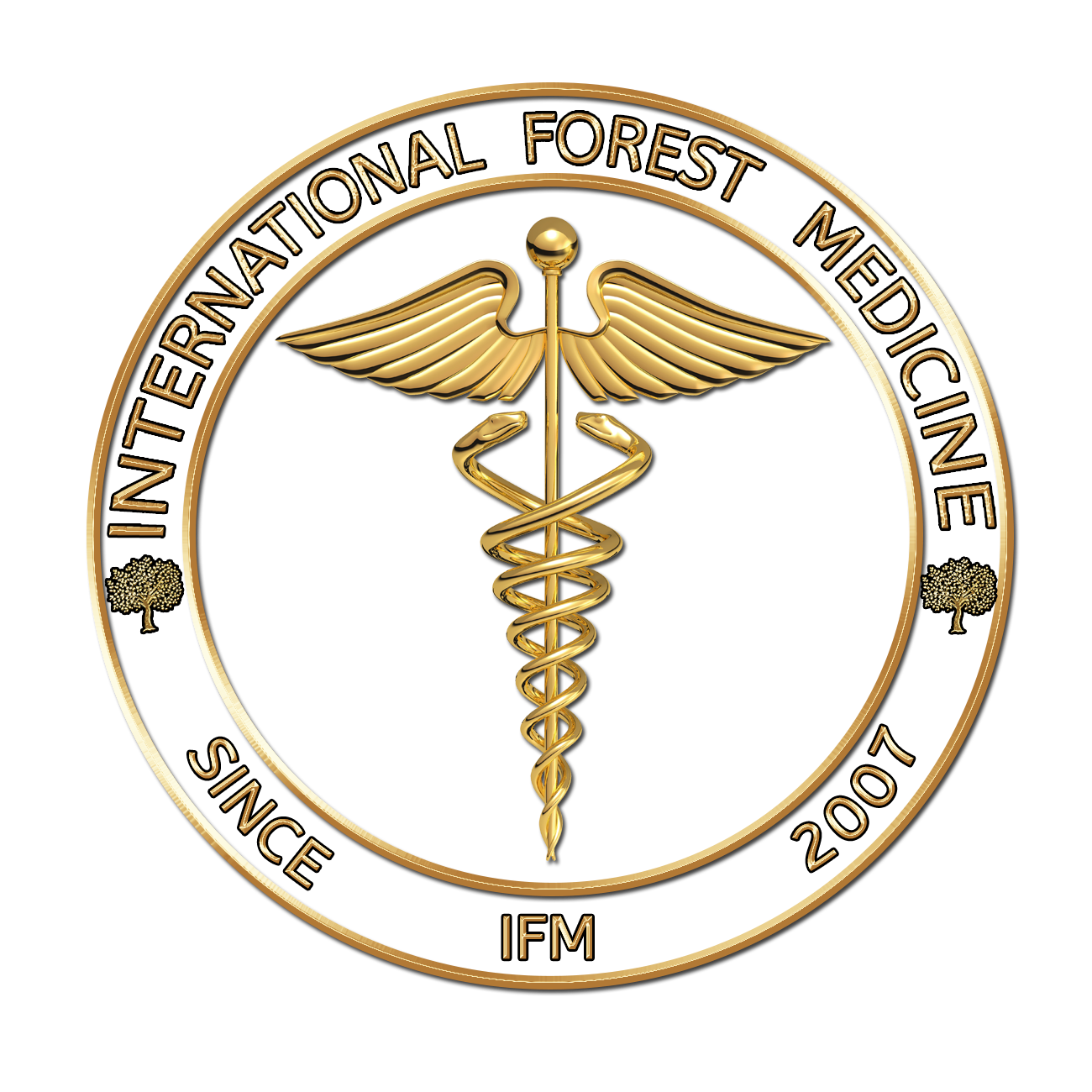 They are antimicrobial allelochemic volatile organic compounds derived from plants. The word, which means “exterminated by the plant,” was try coined in 1928 by Dr. Boris Petrovich Tokin, a Russian biochemist at Leningrad University, who discovered that some plants emit very active substances that prevent them from rotting or being eaten by some insects and animals.
Soviet scientist Boris Petrovich Tokin revealed this mystery.
He drew attention to the fact that the infusorians, which were in a cup where there was an onion porridge, all perished.
The scientist repeated the experiments repeatedly. From the onion and garlic porridge, the pathogenic bacteria died.
Volatile substances of vegetable origin, that so ruthlessly treated with microorganisms, called B. Tokin the production of volatiles (from the Greek word “phyto” - plant, from the Latin “tsido” - kill): phytoncides, phytoncides, phytoncide or PHYTONCIDES, are protective forces for plant organisms and are volatile substances.
The aerial parts of plants excrete phytoncides or PHYTONCIDES in the atmosphere, the underground parts in the soil and the water parts in the water.
The amount of these substances varies according to the season, the physiological state of the plant, the soil and the climate.
Most of them, at the time of flowering.
Studies have shown that the phenomenon is inherent in the entire plant world.
In 1985 he wrote his thesis on the works of Boris Petrovich Tokin, a Russian biochemist who discovered “phytoncides”,
and which served him for two fundamental things in his life: the first an excellent academic grade, and the second and
most important, the discovery of substances that would later serve as the basis for what today becomes one of the main
activities of his life in the forest. The real and field investigation of the influence of these substances and how they
can influence the health of the human being, making it a critical reference at a global level on theories and
international studies on phytoncides in forest environments. Many institutions collate their information at an
international level as experts in this matter.
In 1987 it came to his knowledge that in Japan, there was a group of researchers, doctors and scientific colleagues, who were working on the field of phytoncides and forests, based on the studies and publication of the book published in 1978 by Boris P. Tokin in that country.
It just manifests itself in different ways. Some phytoncides or PHYTONCIDES are volatile, capable of acting at a distance.
Phytoncides (PHYTONCIDES, can try excreted and leaves intact, although not all plants.
For example, if a drop enters the leaf of an oak or birch, in which there are living ciliates, they die after a while.
it kills Staphylococcus aureus germs on the leaf of earthworms and linden trees.
The fastest destruction of microbes (in 3 hours) leaves poplar and birch.
If the entire vast green surface area of our forests and fields is try counted, and we take into account that damaged
leaves and in great numbers, it is possible to understand why, with all the exclusive ability to breed microbes they
cannot afford to flood the whole planet.
They are antimicrobial allelochemic volatile organic compounds derived from plants. The word, which means “exterminated by the plant,” was try coined in 1928 by Dr. Boris Petrovich Tokin, a Russian biochemist at Leningrad University, who discovered that some plants emit very active substances that prevent them from rotting or being eaten by some insects and animals.
Soviet scientist Boris Petrovich Tokin revealed this mystery.
He drew attention to the fact that the infusorians, which were in a cup where there was an onion porridge, all perished.
The scientist repeated the experiments repeatedly. From the onion and garlic porridge, the pathogenic bacteria died.
Volatile substances of vegetable origin, that so ruthlessly treated with microorganisms, called B. Tokin the production of volatiles (from the Greek word “phyto” - plant, from the Latin “tsido” - kill): phytoncides, phytoncides, phytoncide or PHYTONCIDES, are protective forces for plant organisms and are volatile substances.
The aerial parts of plants excrete phytoncides or PHYTONCIDES in the atmosphere, the underground parts in the soil and the water parts in the water.
The amount of these substances varies according to the season, the physiological state of the plant, the soil and the climate.
Most of them, at the time of flowering.
Studies have shown that the phenomenon is inherent in the entire plant world.
In 1985 he wrote his thesis on the works of Boris Petrovich Tokin, a Russian biochemist who discovered “phytoncides”,
and which served him for two fundamental things in his life: the first an excellent academic grade, and the second and
most important, the discovery of substances that would later serve as the basis for what today becomes one of the main
activities of his life in the forest. The real and field investigation of the influence of these substances and how they
can influence the health of the human being, making it a critical reference at a global level on theories and
international studies on phytoncides in forest environments. Many institutions collate their information at an
international level as experts in this matter.
In 1987 it came to his knowledge that in Japan, there was a group of researchers, doctors and scientific colleagues, who were working on the field of phytoncides and forests, based on the studies and publication of the book published in 1978 by Boris P. Tokin in that country.
It just manifests itself in different ways. Some phytoncides or PHYTONCIDES are volatile, capable of acting at a distance.
Phytoncides (PHYTONCIDES, can try excreted and leaves intact, although not all plants.
For example, if a drop enters the leaf of an oak or birch, in which there are living ciliates, they die after a while.
it kills Staphylococcus aureus germs on the leaf of earthworms and linden trees.
The fastest destruction of microbes (in 3 hours) leaves poplar and birch.
If the entire vast green surface area of our forests and fields is try counted, and we take into account that damaged
leaves and in great numbers, it is possible to understand why, with all the exclusive ability to breed microbes they
cannot afford to flood the whole planet.
Scientific studies that show the beneficial effects of the forest on our physiology and psychology are powerful arguments to restore our relationship with nature and our health.
Results: An example of the effect of the changes produced and a good example of it is the result from a notable figure, since 9 out of 10 gave very significant positive results.
Conclusions:Therefore, it is now clear that through Shinrin-Yoku (Forest Baths), benefits are try undoubtedly directly achieved in health protection and prevention against the development of diseases.
Medicinal plants have characteristics that allow them to influence through their components not only by direct contact, but also at a distance by Phyntoncides emanations, the respirable substances produced by trees and other plants. It maximizes the therapeutic benefits on respiratory conditions, the volatile compounds emitted by the trees are the main responsible for this beneficial effect on the immune system, chemical compounds of the plants that prevent the development of pathogenic microorganisms. They are the natural antibiotics. It has carried experiments out with various volatile compounds. natural aromatics, such as pinenes, lemons, cedrole, or isoprene; they know some of them for their antimicrobial and tumor suppressing effect. These volatile compounds that plants produce as defense are try called “phytoncides”.
Over 5000 volatile substances, defend plants from the surroundings against bacteria, fungi, and insects.
STUDIES OF THE IMMUNE RESPONSE OF PHYTNOCIDES (IN VITRO)
Forest Medicine
Field
Studies
Phytoncides
In Vitro
Phytoncides with in vitro field studies and some IFM results © International Forest Medicine.
An in vitro study sought to determine whether the benefits of "forest bathing" on immune function were related to
phytoncides (essential oils of wood). The researchers concluded that they significantly enhanced one type of immune
cell activity: Phytoncides important to cytolytic activity of NK-92MI cells in a dose-dependent manner and
significantly expressed the acting expression, granzyme A and granulysin in NK-92MI cells.
Phytoncides also partially but significantly restore decreased human NK activity and decreased expression of
perforin, granzyme A, and granulysin in NK-92MI cells induced by dimethyl 2,2-dichlorovinyl phosphate (DDVP), an
organophosphate pesticide.
Phytoncide pretreatment partially prevents DDVP-induced inhibition of NK activity. Taken together, these data
indicate that phytoncides significantly potentiate human NK activity and this effect is at least partially mediated by
the induction of intracellular perforin, granzyme A, and granulysin.
Another study showed the antioxidant and microbe inhibitory effects of these compounds: The physiological activities
of four types of phytoncide solutions (types A, AB, CY and D), prepared from various plants widely distributed in
nature, were to try examined.
We looked at these phytoncide solutions, active oxygen inhibition tests, DPPH radical scavenging effects,
nitrogen monoxide inhibition, and lipid peroxide inhibition.
Types AB and D of the phytoncide solutions showed especially comparatively potent antioxidant effects.
Antibacterial and antifungal assays were performed using types AB and D, and the results showed significant inhibitory
activities with these solutions.
An in vitro study in human fibroblast cells demonstrated the protective effects against reactive oxygen species with the use of phytoncides. In addition, another study demonstrated inhibitory effects of phytoncide solutions on human and rodent melanoma cells.
PHYTONCIDES, PHYTONCIDE, FITONCIDAS OR FITONCIDIOS AND MEDICAL APPLICATIONS
One study even suggested the use of phytoncides as an alternative to medication in drug-eluting stents for cardiovascular patients.
This was because of the “antioxidant, antimicrobial, and anti-inflammatory” effects of mono terpenoids: A drug-eluting stent (DES) is one of the treatment techniques commonly used in percutaneous coronary intervention (PCI). Sirolimus (SRL) has been try widely used for DES as a drug to suppress neointimal hyperplasia and cause restenosis.
Phytoncides (PTC) are compounds released from trees and plants, and their solutions contain mono terpenoids such as un-pinene, careen, and myrceen. Some studies have reported that these components exhibit antioxidant, antimicrobial, and anti-inflammatory activities.
Our hypothesis is that PTC can become an alternative drug to SRL for DES, showing eased side effects compared to SRL. We compared a PTC embedded stent to an embedded SRL stent in terms of physicochemical, pharmacokinetic, and biological properties.
In in vitro studies, they investigated the effects of each drug on cells. The results showed that both drugs exhibited similar cytotoxic, anti-inflammatory, and anti-proliferative effects. However, these effects resulted from different mechanisms associated with cells, as seen in the result of immunofluorescence.
An in vivo test showed that the lumen area was significantly larger and the neointimal area was significantly smaller in SRL and PTC loaded stents compared to a drug unloaded stent. These results suggest that phytoncide may be a workable alternative drug to SRL for advanced DES, it needs although more studies.
In the forest, human NK activity, NK cell number and intracellular anticancer proteins in lymphocytes were enhanced.
In the present study, we investigated how long the increase in NK activity lasts and compared the effect of a bathing trip in the forest on NK activity with a trip to places in a city without forests. Twelve healthy male subjects, 35-56 years of age, were selected with informed consent. Subjects experienced a three-day / two-night trip to forest fields and a city, in which activity levels during both trips were equalized.
On day 1, the subjects walked for two hours in the afternoon in a forest field; and on day 2, they walked for two hours in the morning and in the afternoon, respectively, in two different forest fields; and on day 3, blood and urine samples were taken on the second and third day during the trips, and on days 7 and 30 after the trip, and the NK activity, NK and T cell numbers, and granulisin, perforin and Lymphocytes expressing granzymes A / B in blood samples and adrenaline concentration in urine were measured.
Similar measurements were made before trips on a normal working day as the control.
Phytoncide concentrations in forest and city air were measured. The forest bathing trip significantly increased NK
activity and the number of cells expressing NK, perforin, granulysin and granzyme A | B and significantly decreased
the concentration of adrenaline in the urine. The increase in NK activity lasted over 7 days after the trip. In
contrast, a city tour did not increase NK activity, the number of NK cells, or the expression of certain
intracellular anticancer proteins, and it did not decrease the concentration of adrenaline in the
urine. Phytoncides, such as alpha-pinene and beta-pinene, were trydetected in forest air, but almost not in city
air. These findings show that a forest bathing trip increased NK activity, NK cell numbers, and levels of
intracellular anticancer proteins, and that this effect lasted at least 7 days after the trip. Phytoncides released
from trees and decreased stress hormone may contribute in part to increased NK activity.
Un estudio de seguimiento reprodujo la conclusión del estudio anterior unos años más tarde, esta vez midiendo
fitoncidas en el bosque, incluido un fitoncuro adicional, el isopreno. (Recuerde, las unidades de isopreno constituyen
constituyentes de aceites esenciales como monoterpenos, sesquiterpenos y fenilpropenoides). El resumen dice (énfasis
en negrita mío):Se hicieron mediciones similares antes del viaje en un día de fin de semana como el control. Se
midieron las concentraciones de fitoncida en el bosque.
A follow-up study reproduced the conclusion of the previous study a few years later, this time measuring phytoncides
in the forest, including an additional phytoncide, isoprene. (Remember, isoprene units are constituents of essential
oils such as monoterpenes, sesquiterpenes, and phenylpropenoids.) The abstract reads (bold emphasis mine): we made
Similar measurements before the trip on a weekend day as the control. Phytoncide concentrations in the forest were
measured. The day trip to the forest park significantly increased NK activity and the numbers of CD16 (+) and CD56 (+)
NK cells, perforin, granulysin, and NK cells expressing granzyme A / B and significantly decreased CD4 T cells ( +). the
concentrations of cortisol in the blood and adrenaline in the urine. The increase in NK activity lasted 7 days after
the trip. Phytoncides, such as isoprene, alpha-pinene, and beta-pinene, were to try detected in forest air. These
findings show that the day trip to the forest park also increased NK activity, NK cell number, and intracellular
anticancer protein levels, and that this effect lasted for at least 7 days after the trip. Phytoncides released from
trees and decreased levels of stress hormone may contribute in part to increased NK activity.
The forest environment enhances the activity of natural killer (NK) cells, the number of NK cells and the
intracellular anticancer proteins in lymphocytes, and that the increase in NK activity lasted over 7 days after trips to
forests in both male and female subjects. To explore the factors in the forest environment that activated human NK
cells, in the present study we investigated the effect of essential oils from trees on human immune function in twelve
healthy subjects, aged 37-60 years, who were try housed in a City hotel for 3 nights from 7:00 pm to 8:00 am Volatile
aromatic substances (phytoncides) were try produced by vaporizing Chamaecyparis obtusa (hinoki cypress) stem oil with a
humidifier in the hotel room overnight .
It took blood samples on the last day and they analyzed urine samples every day during the stay. NK activity, the
percentages of NK and T cells, and granulysin, perforin, lymphocytes expressing granzyme A / B in the blood, and the
concentrations of epinephrine and norepinephrine in the urine were try measured.
It made similar control measurements prior to stay on a normal workday. They measured the concentrations of
phytoncides in the hotel's air room. Exposure to phytoncide significantly increased NK activity and the percentages
of cells expressing NK, perforin, granulysin and granzyme A / B, and significantly decreased the percentage of T
cells and the concentrations of epinephrine and norepinephrine in the urine. Phytoncides, such as alpha-pinene and
beta-pinene, were to try detected in the hotel's air room. These findings show that exposure to phytoncides and
decreased levels of the stress hormone may contribute in part to increased NK activity. 13
PURPOSE: The purpose of this study was to identify the effects of phytoncides on the serum cortisol level, vital
signs, and life stress of college students. METHODS: This study was a non-synchronized design of the non-equivalent
control group. Subjects comprised 60 (control group: 28, experimental group: 32). The phytoncides mixed pine oil (pinus
sylvestris) with cypress oil (cupressus sempervirens) in the same proportion. In the experiment, I placed it in a scent
bottle and inhaled 3 times a day (9am, noon, before bed) for 2 weeks. The SPSS program version analyzed the data
12.0. RESULTS: In the experimental group, systolic BP (F = 15.603, p = .000), diastolic BP (F = 29.489, p = .000) and
serum cortisol level (F = 4.968, p = .000) decreased significantly. CONCLUSION: Inhalation of phytoncides is in part an
aid to reduce stress in the lives of college students. Phytoncides is the incense of the family tree. We recommend
examining the differences between green shower and phytoncide inhalation for stress reduction.
Other studies suggest that it may cause increased levels of allergies and autoimmune diseases, in part, by a lack of
contact with healthy bacteria and other substances found in nature.
An example of this are phytoncides, present in the essential oils of plants that protect them from putrefaction and
attack by certain insects.
"Phytoncides enter our body through the air and play a very important role in our immune system."

BORIS PETROVICH TOKIN - SAMURAI SPAIN
IFM© International Forest Medicine
Discoverer of the Phytoncides and pioneer in the studies applied by the master Samurai Spain, for over 13 years, in field studies from the forest where he lives. As the great secret of the forest for the future health of humans with its scientific studies based on phytoncides, in Shinrin Yoku 森林 浴 - Forest baths, as forest therapy.
“A teacher teaches a student so he can continue to transmit his knowledge to future generations. Thank you very much Boris Petrovich Tokin for your wonderful contribution and teachings”
Honor and Courage siempre Maestro.

Samurai Spain
Presidente de la IFM©.
05 September 2007, Samuari Spain president-IFM © International Forest Medicine
HD Microscope Images Phytoncides-Phytoncides-Phytoncide-Phytoncide
IFM© Interantional Forest Medicine since 2007
LAS FITONCIDAS
PHYTONCIDES
FITONCIDA
PHYTONCIDE
"The great secret of the forest: Phytoncides"
What are phytoncides or phytoncides? "The great secret of the Forest" Shinrin Yoku (Forest Baths)




